By S.N. Venkatnag Sobers
The Heritage City of Mysore may as well be called a City of Museums, thanks to the sheer number of museums in the city. Some of the historical buildings that were constructed during the Wadiyar rule have now been converted into museums including Jayalakshmi Vilas Mansion (folklore museum), Karanji Mansion (Postal Museum), Jaganmohan Palace (Jayachamarajendra Art Gallery) and Indira Gandhi Rashtriya Manav Sangrahalay. This apart, there are many other museums including Regional Museum of Natural History, Mysore Palace Residential Museum and the Rail Museum.
This Weekend Star Supplement takes our readers on a tour of these museums which have become an integral of our city’s culture and history.
Museums to awe tourists this Dasara…
- Folklore Museum (Jayalakshmi Vilas Mansion)
Jayalakshmi Vilas Mansion is located in the green surroundings of Manasagangothri, the PG campus of University of Mysore. It is a museum of priceless collections of artefacts.
The mansion was built in 1905, during the period of Nalwadi Krishnaraja Wadiyar for Princess Jayalakshmi Ammani, the eldest daughter of the Maharaja Chamaraja Wadiyar. It was originally called ‘the First Rajkumari Mansion’. The first princess Jayalakshmi, was married to Sirdar M. Kantharaj Urs in 1897, who later became the Dewan of Mysore. The mansion was acquired by University of Mysore to establish a postgraduate centre in its campus known as Manasagangothri. The building was in a state of neglect for a very long time and it was restored at a cost of Rs. 1.17 crores a few years back.
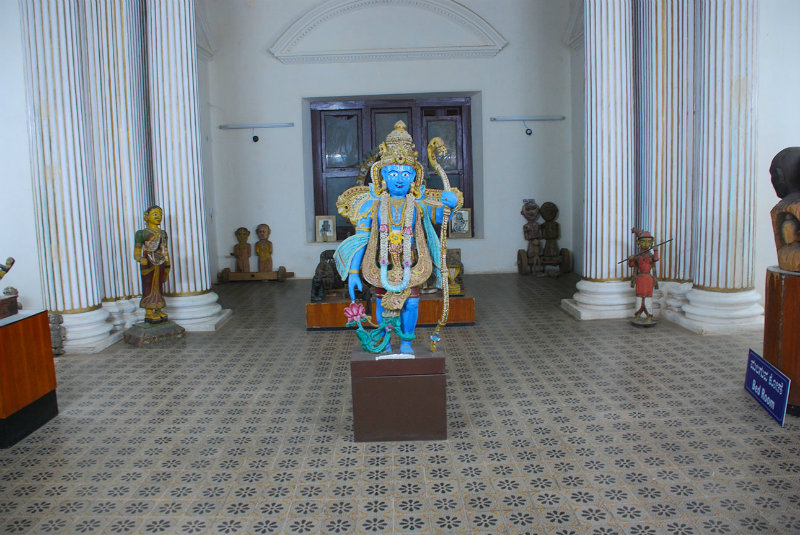
The mansion has 125 rooms, 300 windows, 287 exquisitely carved doors and it was spread across 6 acres. The Jayalakshmi Vilas Mansion houses Folklore Museum. It has three museums – a sculpture gallery, folklore gallery and the central part of the mansion, which is a treat to watch. The museum has a collection of artefacts, puppets, dolls, costumes and many which are on display.
The central part of Jayalakshmi Vilas Mansion is a splendid sight to watch. It has two levels of balconies. It is said that the central part of the mansion was used for several ceremonies.
This apart, there is also a dog cemetery – the resting place of pets belonged to Princess Jayalakshmi Ammani.
The museum is open from 10.30 am to 5.30 pm except for Sundays.
- Indira Gandhi Rashtriya Manav Sangrahalay
The Indira Gandhi Rashtriya Manav Sangrahalay (IGRMS) is one of most visited museums in Mysuru. Located on Irwin Road in the heart of the city, the IGRMS is set up in one of the heritage buildings of Mysuru – ‘The Wellington Lodge’.
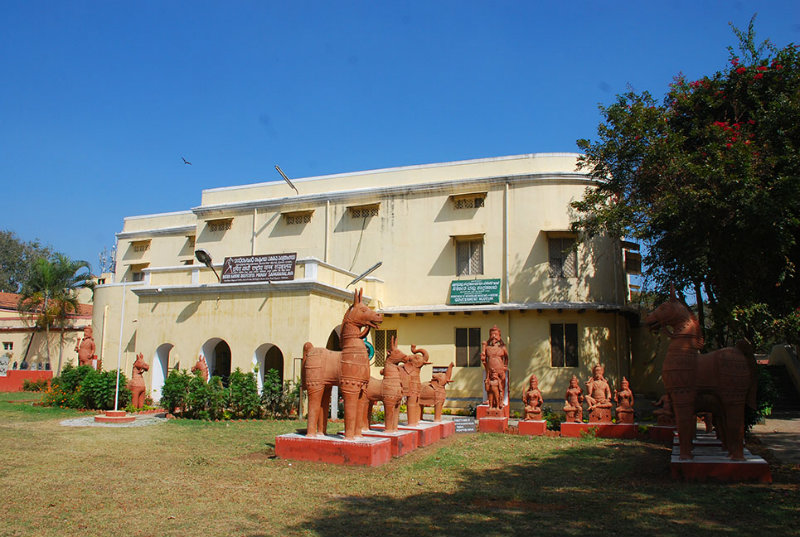
It provides platforms to various artists/artisan groups from different parts of India to demonstrate aesthetic beauties of their traditional knowledge systems, creative art forms and craft techniques. The Regional Centre organises periodically exhibitions on various forms of cultural identities, conduct short term training programme for aspiring people on various traditional art forms and techniques and organises varieties of music, dance and theatrical performances of fold, tribal, and classical traditions.
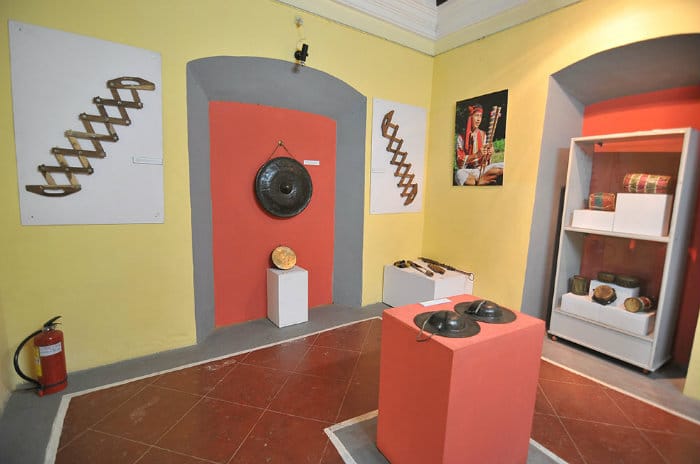
The Wellington Lodge is the oldest structure having been in existence for over 200 years. This building was earlier occupied by the Duke of Wellington, when he was in political charge of Mysore, during the years 1799-1801 A.D., soon after the fall of Tipu Sultan.
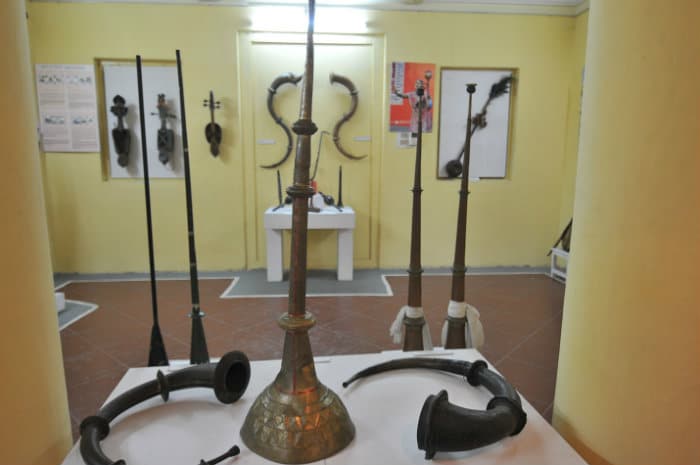
The museum is open from 10 am to 6 pm on all days except for Mondays.
- Jaganmohan Palace
Jaganmohan Palace, once the home for Waidyars, the erstwhile rulers of Mysore, has been converted into an art gallery. It also has an auditorium which caters to the need of fine arts lovers in the city. Jaganmohan Palace is on one of the seven palaces in Mysuru. It was constructed in 1861 by Krishnaraja Wadiyar III as an alternate retreat for the Royal Family.
The Mysore Palace, the original home of the Wadiyars, was gutted in a fire accident and construction of a new Palace was started in 1897 and was completed in 1912 till then Jaganmohan Palace is where the Royals lived. In fact, the coronation of Nalwadi Krishnaraja Wadiyar was held in this Palace during 1902.
In 1915, Jaganmohan Palace was converted into an art gallery, which was later renamed in 1955 after Jayachamarajendra Wadiyar, as the Sri Jayachamarajendra Art Gallery. Earlier, convocations of the University of Mysore were also held in this Palace. The first session of the Legislative Council of the then Mysore State was held here in July 1907. The Legislative Council was then called as the Representative Council and was presided by the Dewan. It was Jayachamarajendra Wadiyar who converted the Palace into a trust and opened it for public viewing.
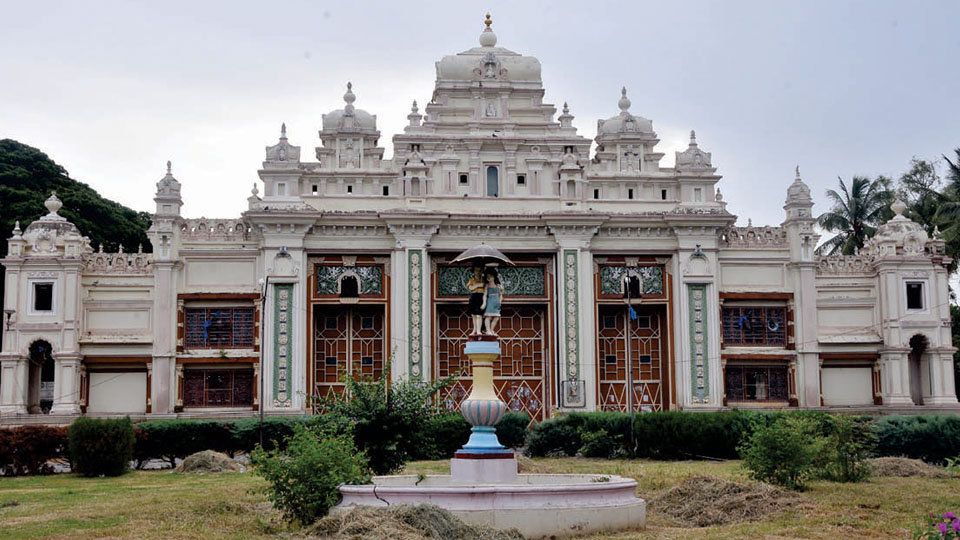
The front view of the 156-year-old Jaganmohan Palace.
Jaganmohan Palace is built in traditional Hindu style and has three stories. In 1900, an external facade with a hall behind it was added to the Palace. This facade has three entrances and the entablature has religious motifs and miniature temples crafted on it. There are mural paintings on the wall which depicts the Dasara scene and the canvas depicting the sequence of the Jumboo Savari. A family tree of the Wadiyars tracing the lineage of the Royal Family is also painted on a wall.
The art gallery contains one of the largest collections of artefacts in South India. Most of these artefacts are paintings, prominent among which are those by Raja Ravi Varma, some of which demonstrate scenes from the Hindu epics, Ramayana and Mahabharatha.
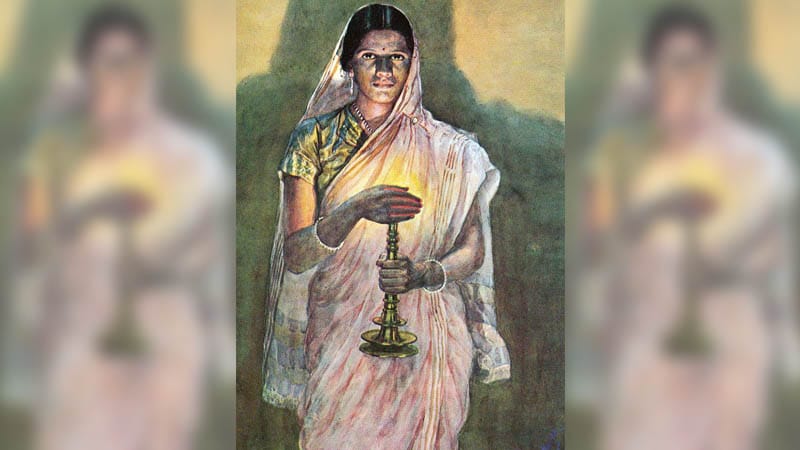
Lady With Light
The collection of paintings in the gallery exceed 2,000 in number and these belong to different Indian styles of painting like Mysore, Mughal and Shantiniketan.16 paintings of Raja Ravi Varma were donated to the gallery by Jayachamarajendra Wadiyar. Another important painting displayed here is the ‘Lady with the Lamp’ painted by the artist Haldenkar and is placed in a dark room where it is the only exhibit. This is to give an illusion that the glow of the lamp is illuminating the face of the woman.
Some other painters whose works are on exhibit include Nikolai Roerich, Svetoslav Roerich and Rabindranath Tagore and Abanindranath Tagore. There are beautiful paintings by the Ukil brothers -Sharada Ukil, Ranada Ukil and Barada Ukil.Another collection of paintings by a British Army Officer named Col. Scot on the wars between Tipu Sultan and the British army are said to be the only visual representation of the wars.
Other exhibits here include weapons of war, musical instruments, sculptures, brassware, antique coins, and currencies. Some other unique artefacts exhibited here is a French clock which has a mechanism in which a parade of miniature soldiers is displayed every hour; beating drums mark the seconds and a bugle marks the minute. Paintings made on a grain of rice which can be viewed only through a magnifier are also displayed here.
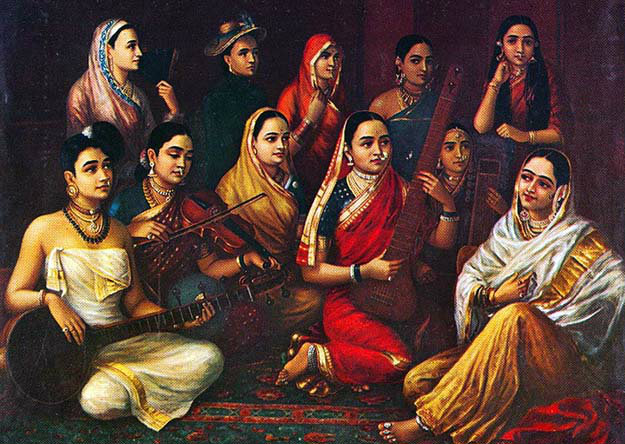
Ravi Verma paintings
A new hall was built in 2003 because there was insufficient space available to exhibit all the paintings.The original paintings of Raja Ravi Varma which are over 100 years old were restored by the Regional Conservation Laboratory (RCL).
Jayachamarajendra Art Gallery is open from 8.30 am to 5.30 pm everyday.
- Postal Museum (Karanji Mansion)
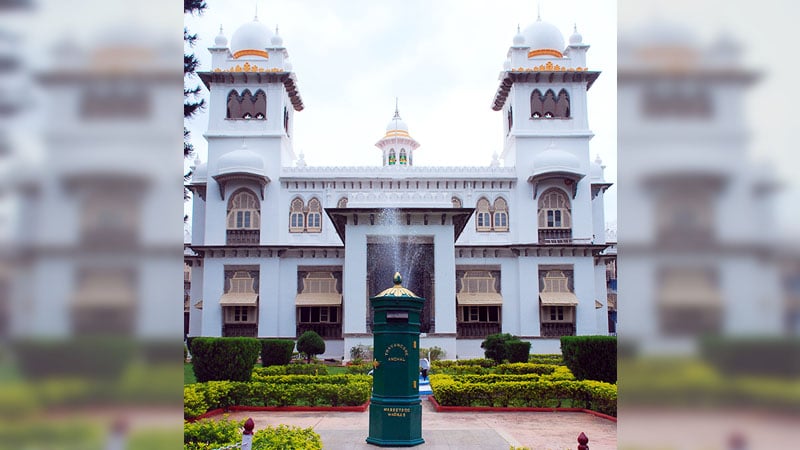
The Karanji Mansion, which houses the Postal Training Centre and Museum, in Nazarbad, was built by Chamaraja Wadiyar. Karanji Mansion was built for one of his three daughters – Krishnajammanni.
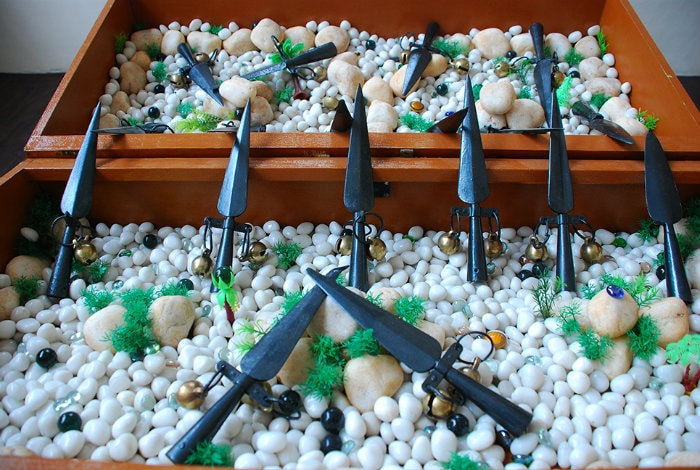
The building constructed in 1902 on an area of 38 acres and was named as Karanji Lake since it is located near the Karanji Lake. The Building was taken over by the Postal Training Institute of the Department of Posts in 1965. The Postal Department not only trains its personnel here it has also set up a museum depicting the Postal history in the country.
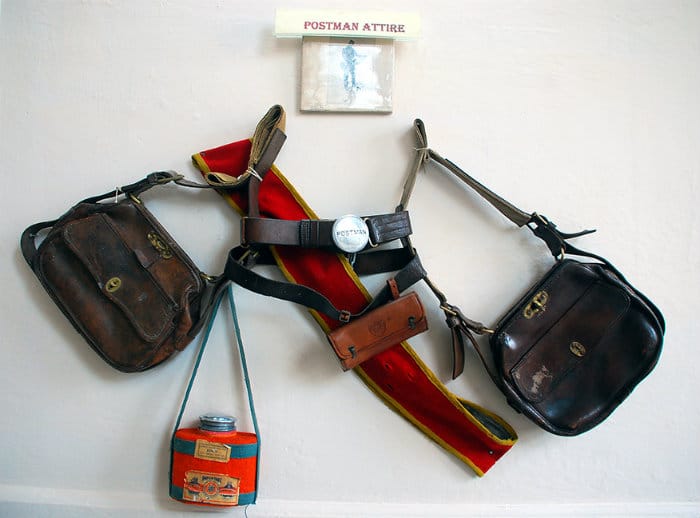
Museum is open from 9.30 am to 5.30 pm on all days except for Sundays.
- Regional Museum of Natural History
The Regional Museum of Natural History is located in Siddarthanagar in city exhibits on plants, animals and geology of South India. It was inaugurated on 20 May 1995. The galleries emphasise the conservation of nature and natural resources while depicting ecological interrelationship among plants and animals. Visually challenged students can feel the exhibits of animals on the premises.
The museum provides an extracurricular activity for schools and promotes environmental awareness.
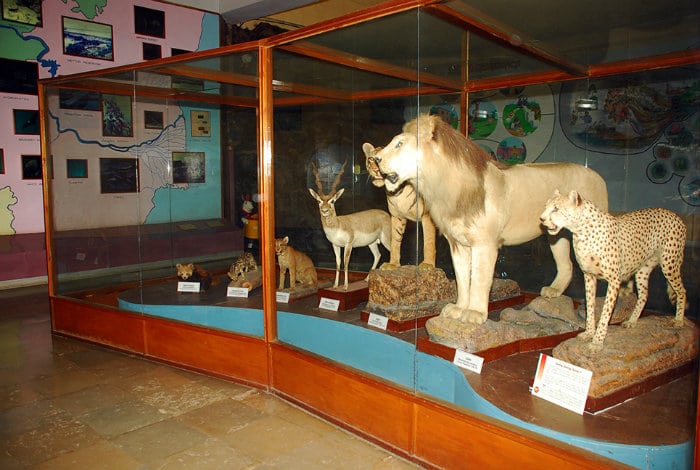
Biological Diversity has multiple sections. The first section has a special emphasis on the Western Ghats. The next section is about tropical rain forests, of countries that possess them, showcasing their diversity and global benefits. Next is a section on the significance of wetlands and the mangrove forests followed by a section which depicts a diorama of a marine habitat. The last section has a large exhibit panel cautioning against the destruction natural diversity. There are also exhibits on the evolution of life.
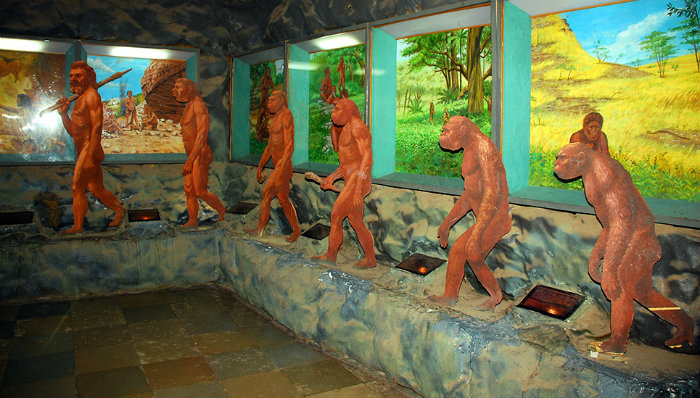
The Discovery centre consists of a discovery room, a computer room, a vivarium and a mini weather station. Children can handle, examine and study specimens in the discovery room. A mini theatre and a sound booth are also present to keep children occupied. The bioscience computer room facilitates studying biology through interactive and multimedia techniques at a high-school or college level.
On the grounds of the museum is a small botanical garden with local trees and a collection of plants used in Ayurvedic medicine.
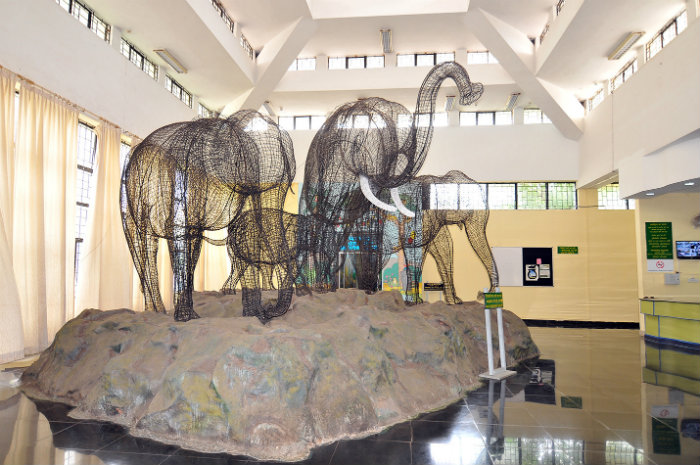
The gardens include an interpretative trail section designed for the visually impaired with not only signs in Braille but also a sunken foot bridge to provide a “walk in water” experience of aquatic plants and fishes. Museum curators describe this section as “the first museum garden for the visually-impaired in India.”
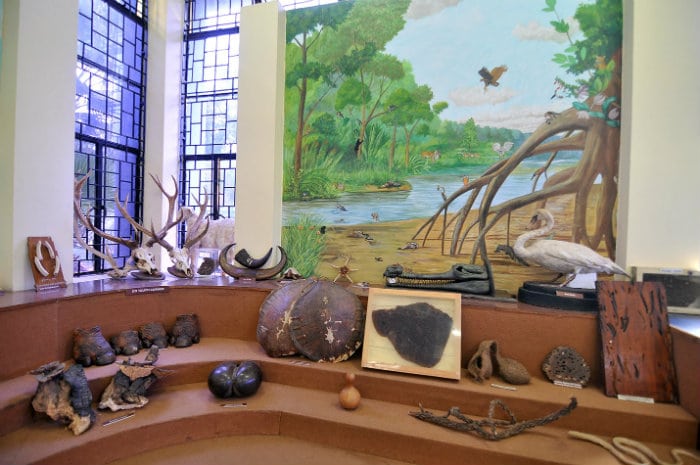
The museum is open from 10 am to 6 pm on all days except for Mondays.
- Mysore Palace Residential Museum
The Mysore Palace complex houses two museums. First one is in the main Palace building which is maintained by the Mysore Palace Board and other is the Private Residential Museum, which is looked after by the Royal Family. It is said that at the time when the Palace was gutted in 1897 this portion was saved. The private museum gives a glimpse of Old Palace building which is called Karikallu Thotti.

The museum has a display of vintage photographs which portrays the erstwhile Maharajas of Mysore and the royal folks. There are photographs which show the close relationship shared by the Wadiyar family with the British. It also exhibits costumes, musical instruments, kitchen utensils, palanquins used by the Wadiyar family. The display of hunting trophies and armouries are also impressive.
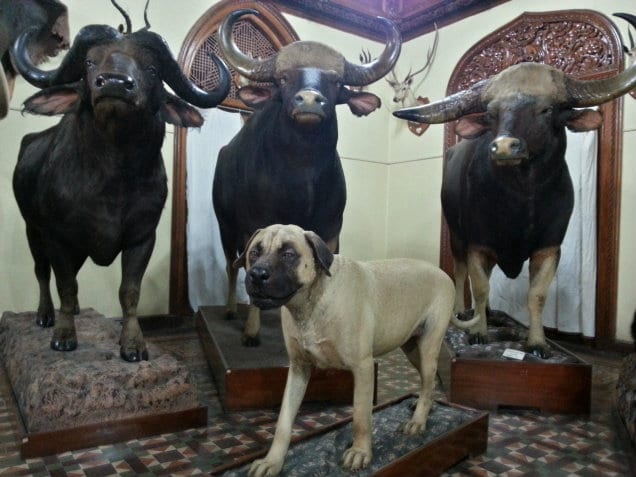
Residential Museum is open all days between 10 am to 5.30 pm.
- Railway Museum
The Railway Museum in Mysuru is one of the earliest Rail museums established in India by Indian Railways during 1979 after the National Railway Museum in Delhi.
The Maharaja of Mysore contributed with his royal carriages enriching the treasure of the Railway Museum in Mysore.
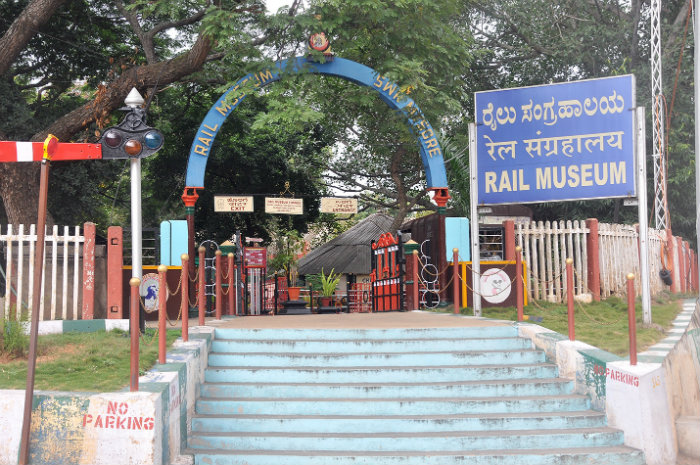
Main highlight of the museum is Sri Ranga Pavilion, two royal coaches that belonged to the Maharaja of Mysore.
Other attractions include ES 506 4-6-2, the first locomotive at the entrance, an Austin rail-motor car, several inspection cars, one inspection car is used as a ticket office, the Maharani Saloon carriage that has a kitchen, dining car unit and royal toilet dating back to 1899.
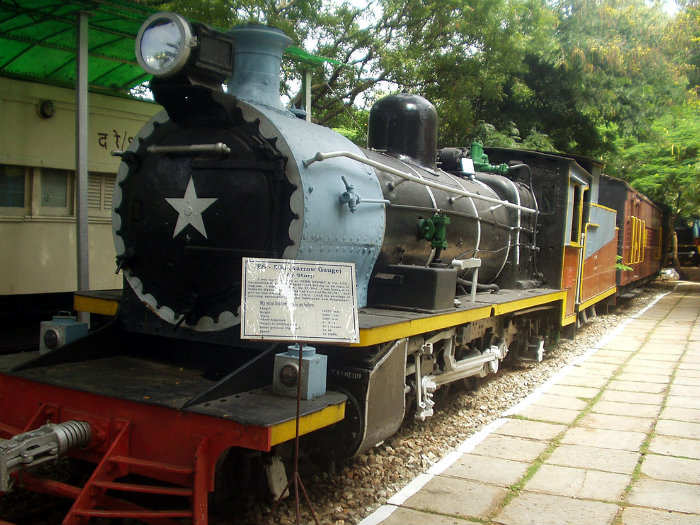
It also houses a W.G. Bagnall #1625 which was made in 1900 for Khushalgarh – Kohat – Thal Railway which was a military frontier line and later transferred to North Western Railways and many more. The museum is located on KRS Road, opposite to CFRTI Main Gate.
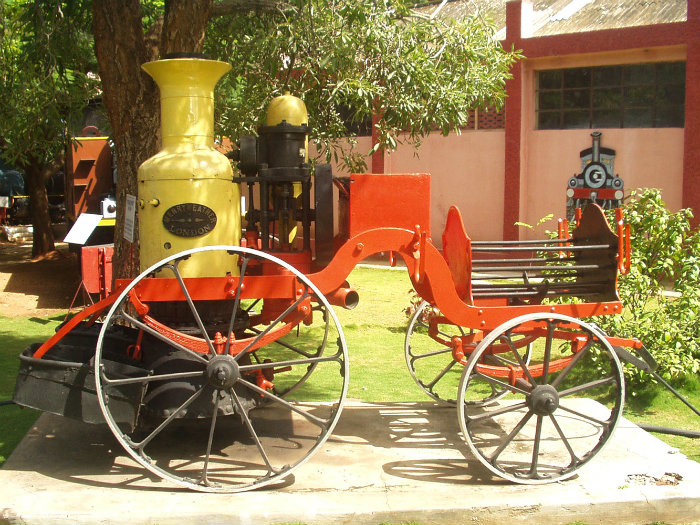
Railway Museum is open from 10 am to 1 pm and 3 pm to 5 pm on all days except for Mondays.



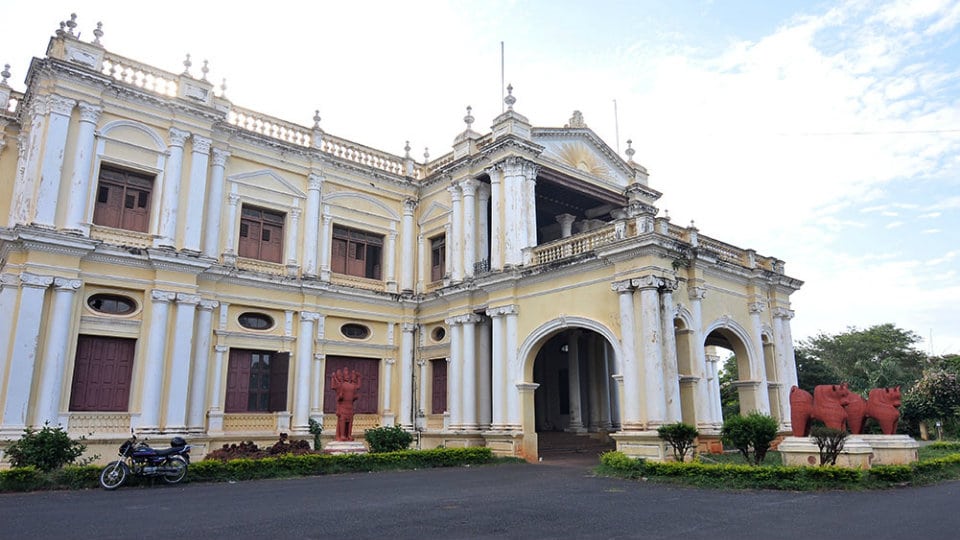
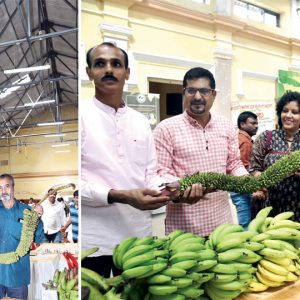
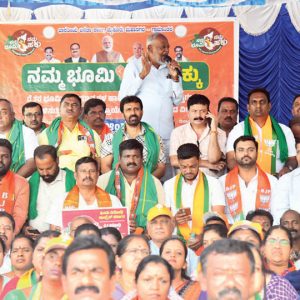
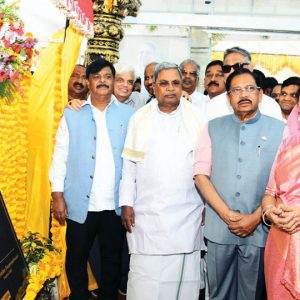
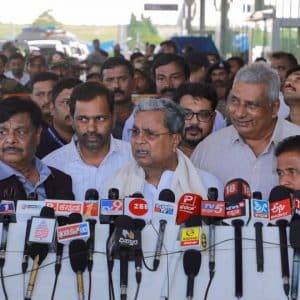
Recent Comments